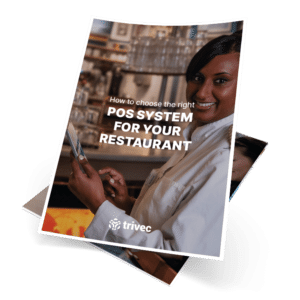How to increase your restaurant profit margin?

How to increase your restaurant profit margin
One of the most important aspects of running a successful restaurant business is maximizing your profit margins. And higher profit is on everyones lips these days. In this article, we will explore how to increase revenue and your restaurant’s profit margin and set your business up for long-term success. Are you about to open a restaurant, get some useful tips in our e-book Opening a restaurant.
Reinvent your business for the future
In order to increase your restaurant’s profit margin, you need to be willing to embrace change and adapt to the latest industry trends. Restaurateurs investing in flexible and full-scale point of sale-systems with real-time analytics, handheld pos for a higher table turnover, customer loyalty and loyalty programs will increase sales volume and increase revenue. This means reinventing your business for the future and for new customers by investing in the right technology.
A flexible full-scale POS system and a handheld POS will help organize the restaurant staff, the kitchen staff and the bartenders in a new way. With a handheld ordering and payment device you can have one waiter out among the guests who knows about food and drinks and who is talking to the guests, taking orders and payments. As a complement you use runners bringing out orders and drinks. This solves the shortage of staff the whole restaurant industry is facing at this very moment and it reduces labor costs and increases upsell.
What is the average restaurant profit margin?
The average restaurant profit margin varies depending on several factors such as location, size, and type of restaurant. According to the National Restaurant Association, the average restaurant profit margin ranges from 3-5%. However, this number can be increased by implementing certain strategies that we will discuss further in this article.
Average profit margins by restaurant type
That 3-5% profit margin mentioned above generally refers to full service restaurants (FSRs), which are establishments that generally include kitchen staff, managers, servers, bartenders and a host, at minimum. However, these numbers can vary greatly depending on factors like restaurant size, price range, turnover rates, location and more.

What is gross profit?
Gross profit refers to the amount of money a restaurant earns after deducting the cost of goods sold (COGS) from its revenue. COGS includes the cost of ingredients, kitchen supplies, and other expenses associated with preparing menu items. Gross profit is an important metric for restaurants because it indicates how efficiently a restaurant is using its resources.
How to calculate gross profit
To calculate gross profit, subtract the COGS from the total revenue. For example, if a restaurant generates $50,000 in revenue and has $20,000 in COGS, the gross profit would be $30,000.
What is net profit?
Net profit is the amount of money a restaurant earns after deducting all expenses, including operating costs, rent, salaries, and taxes, from its revenue. Net profit is the ultimate goal for any business because it indicates the profitability of the business as a whole.
How to calculate net profit
To calculate net profit, subtract all expenses from the total revenue. To calculate net profit margin as for a certain time period, you need the following information, revenue, gains, expenses and losses.
Why are restaurant profit margins so low?
While there are many factors that contribute to low profit margins in the restaurant industry, one of the main reasons are three major expenses, the cost of goods sold COGS, staffing and the other is rent and electricity.
Once all expenses are paid, restaurants are typically left with between only 2 and 6% in net profit.

How to increase your restaurant’s sales
Let’s start by tackling how you can increase your restaurant’s sales volume. Here are three things you can do to achieve just that:
1. Use menu engineering, think thoroughly through menu pricing and use high-profit ingredients, calculate food costs and food waste. Combining your POS with an app for calculating food waste per portion will help you.
2. Improve your table turnover with a handheld pos.
3. Reorganize your staff, educate a few people and let them stay out among the guests, combine it with runners.
A bit more specific:
1. Menu engineering means you’ll need to know what each of your dishes cost per serving and you need to calculate the food cost percentage. Look over the cost per ingredient and portion sizes. The average restaurant needs to keep food cost percentage between 28% and 35% in order to run a financially healthy operation.
2. Your table turnover can be increased using a handheld pos (Trivec HandyPay) for faster orders and payments out among the tables. No need for your staff to run back and forth to the pos.
3. Educate the staff by offering trainings to a few people who operates out among the guests. Let these people increase the level of service with the knowledge they have. Combine these people with runners taking out orders and drinks.
These tips will increase the customer experience, the total sales and the restaurant’s revenue in total.
Would you like to read more about restaurant marketing, read here.
Learn about Trivec integrations for analytics and food cost control
Trivec offers a large eco-system of partners for seamless integrations to e.g. analytics, inventory and food cost control. As an analytic and inventory tool Qvanti help you develop your business to its full potential through operational economics and purchasing behaviour. Qvanti has in its product offering; purchasing portal for all your suppliers, reports and statistics, operational reports and forecasts.
Seamlessly integrate your Trivec POS system with Qvanti inventory and analytics system. You save hours of administration work and make it easier to manage your data. Read more about Trivec integrations here.

Contact us
After you have filled in your contact information, you will be contacted by one of our knowledgeable experts who can tell you more about our solutions.



